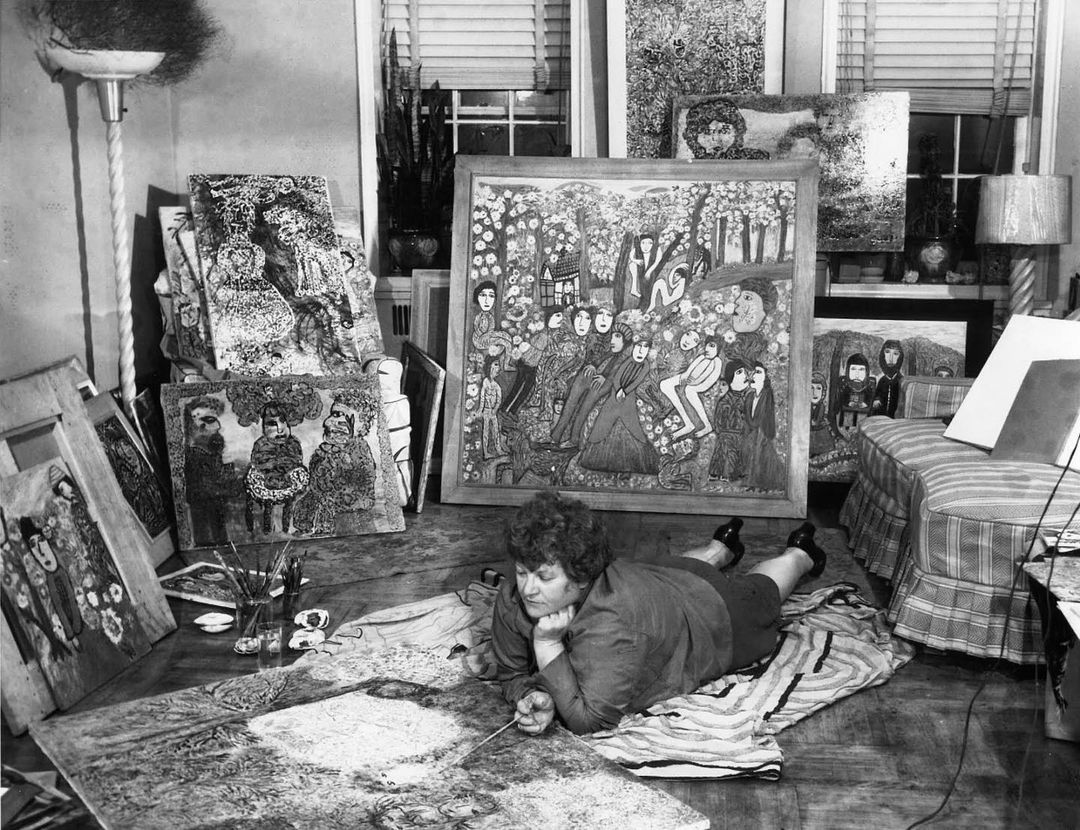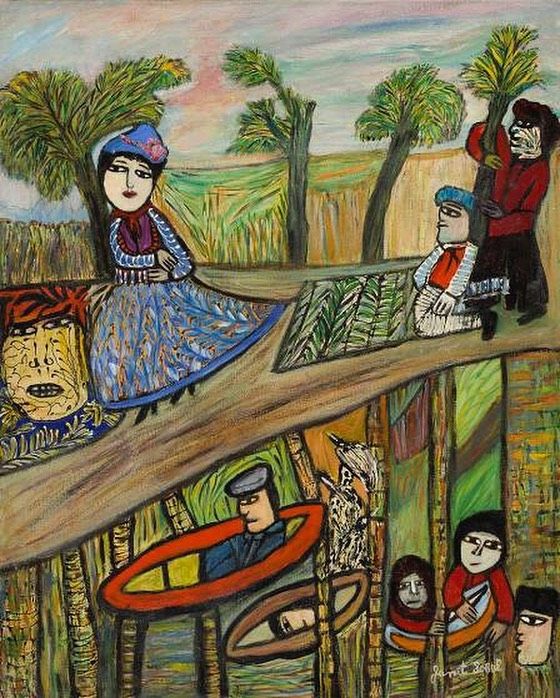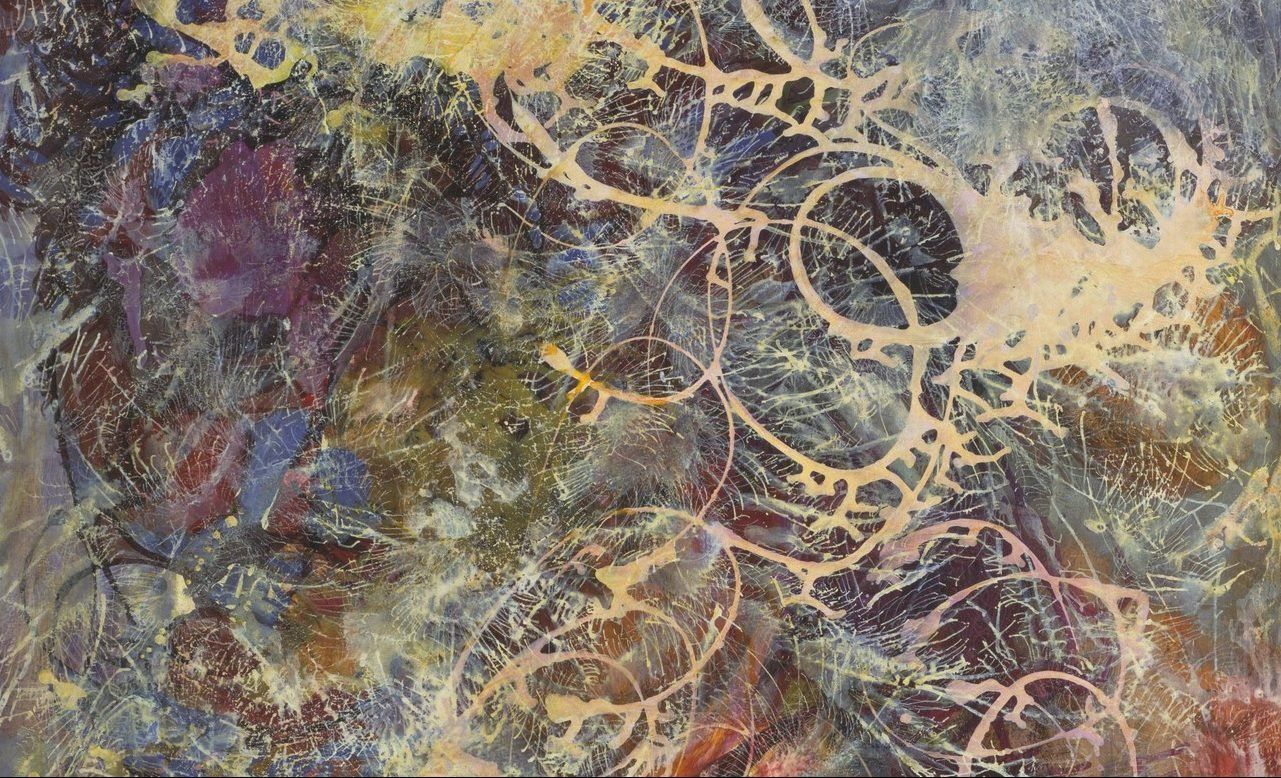Sometimes even the greatest talents are overlooked: such was the fate of Ukrainian-born Janet Sobel, who used the drip painting technique long before its great master, Jackson Pollock.
Legend has it that the young genius Jackson Pollock was suddenly overcome with inspiration and splashed paint on the blank canvas beneath his feet. In doing so, he created a painting technique that is still unique today.
If not entirely forgotten by art historians, Janet Sobel, who had used this approach years before, and whose paintings Pollock himself had seen, was forgotten by the general public.

Emigrant from Eastern Europe
Janet Sobel was born Jennie Olechovsky in 1893 in Dnipro, Ukraine. Her father was killed in the Jewish pogrom following the 1905 Russo-Japanese War, so her mother packed up the family and emigrated to the United States in 1908. A clerk at the Ellis Island immigration center changed the family name to Wilson. Jennie (who was then called Janet) was only 16 when, two years after emigrating, she married Max Sobel, also from Ukraine. They had five children, and during the Great Depression, they were so poor that she made potato knishes, which her sons used to sell on the Brighton Beach boardwalk.

Art born from experimentation
She began experimenting with art in 1937. Her 19-year-old son took up painting, and as a typical female role, the mother’s only job was to put the tools away. But when she took the dirty brushes in her hands, Ukrainian folk art motifs slowly sprouted from under her hand. At first, she painted on whatever surface was suitable: magazine pages, used envelopes, scraps of paper. When her son saw her dreamlike figures, he was amazed and contacted the renowned surrealist painters André Breton and Marc Chagall to show them the paintings. He also sent the works to a prominent local gallery owner who was known for exhibiting naïve artists. Five years after she started painting, Sobel was a sensation: she sold her first painting, and exhibited at the Arts Club of Chicago and the Brooklyn Museum.

Instinctive movements
Her art changed from folkloristic to abstract around 1944. She used the technique that the world would later come to know from Pollock: splashing paint over the canvas on the ground in broad strokes of her arms. She even used innovative tricks such as blowing air over the paint with a vacuum cleaner to create swirls. She was always on the road and was selected for Peggy Guggenheim’s legendary all-women exhibition The Women in 1945. The following year, Guggenheim gave her a solo show. It was here that Jackson Pollock encountered her paintings. Many years later, the artist’s friend, the legendary critic Clement Greenberg, mentioned in an interview that they had marveled together at the innovation of the paintings at the exhibition, and Pollock confessed how much Sobel had influenced him.
Heavenly Sympathy by Janet Sobel, 1947#WomensHistoryMonth pic.twitter.com/IHx3veGPXN
— Vivien Whiskey 💙💛 (@vivienwhiskey) March 18, 2018
In exile
In 1946, just as quickly as Sobel appeared in the art world, she suddenly vanished: her husband moved the family from New York, and as she could not drive, she became completely isolated from the art world. Although she continued to paint, none of her work was ever exhibited again in her lifetime, largely because her patron, Peggy Guggenheim, had moved to Europe. She began to develop strange physical symptoms: doctors said she was allergic to paint, but now it is more likely that her problems were psychosomatic. In 1968, the Museum of Modern Art in New York bought Sobel’s work, Milky Way in preparation for a Jackson Pollock exhibition to commemorate her influence on Pollock, but she could not see it exhibited in 1970, as she died in 1968. She left behind hundreds of paintings, some of which are now in the collections of major museums.
Source: MessyNessy
Cover photo: Janet Sobel, Milky Way, 1945, The Metropolitan Museum of Art, New York, NY, USA

Ionic columns and disco lights in Andreas Angelidakis’ exhibition

A fairytale came true—Taste of Transylvania










